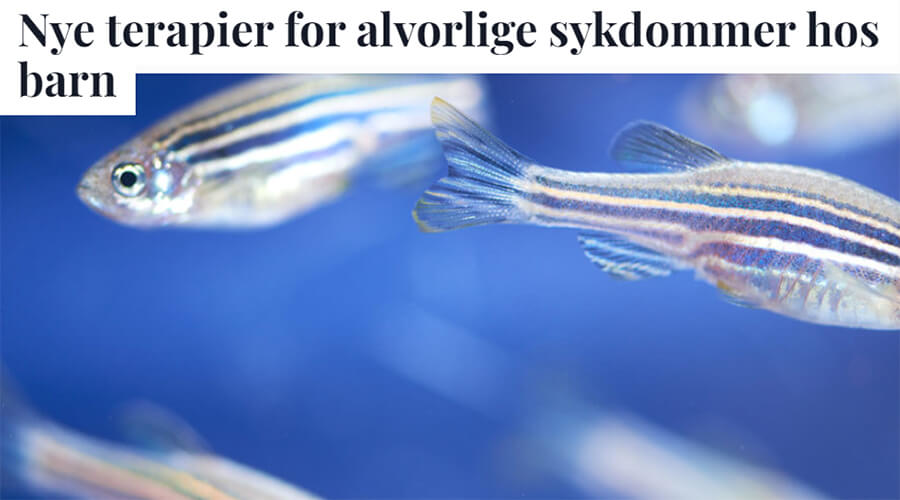Haapaniemi Lab was featured in Aftenposten, one of the main Norwegian newspapers
Aftenposten run a focused life science collection. Our laboratory – together with the Zebrafish facility – was featured as representatives of NCMM in an article about new therapies for serious diseases in children.
The article references our group leader Emma and introduces the aim of our lab – developing therapies to correct genes for inherited immunological diseases and thus helping patients who have inherited a defective gene leading to a combination of infections, autoimmune diseases and blood cancers.
These diseases are ideal for gene editing, as you can isolate stem cells from the patient's blood, correct the gene using the Nobel Prize-winning gene editing technology CRISPR, and then return the cells to the patient.
Correction of genes using CRISPR has great potential in the immunotherapy of cancer, and for the treatment of rare genetic diseases. Our goal is to make the technology more efficient, so that the same system can be used to correct gene errors in several different diseases, rather than focusing on just one genetic disease. With this approach, future cell therapy can become more affordable and more accessible to several patient groups.
The technology is still new, and is not yet available for clinical use in Norway. We need a completely new infrastructure to use these methods for clinical treatment, and are now working to make that happen. In addition, we work with security profiling.Emma Haapaniemi
Read the full article here (in Norwegian) and check out more about our research.
